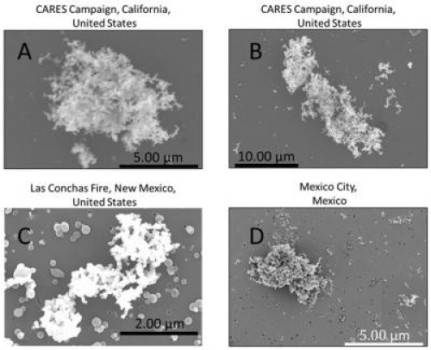Scientists linking wildfire soot, climate change

These images show typical soot superagregattes observed with an electron microscope in wildfire smoke samples collected from three fires in Northern California, New Mexico and Mexico City. Photos/Desert Research Institute
By Science Daily
Every year, wildfires clear millions of hectares of land and emit about 34 percent of global soot mass into the atmosphere. In certain regions, such as Southeast Asia and Russia, these fires can contribute as much as 63 percent of regional soot mass.
In a paper published in Nature Scientific Reports, a team of scientists led by Rajan Chakrabarty from Reno’s Desert Research Institute report the observation of a previously unrecognized form of soot particle, identified by the authors as “superaggregates,” from wildfire emissions.
These newly identified particles were detected in smoke plumes from wildfires in Northern California, New Mexico, Mexico City, and India.
For several decades, scientists have been trying to quantitatively assess the impacts of wildfire soot particles on climate change and human health. However, due to the unpredictability of wildfire occurrences and the extreme difficulty in sampling smoke plumes in real-time, accurate knowledge of wildfire-emitted soot physical and optical properties has eluded the scientific community.